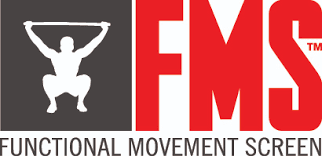Graston Technique and Dry Needling are our two favorite treatment options for our shoulder pain patients at our Burlington office. However, how do we decide to use one or the other? Our decision depends on the location and the cause of the pain.
Graston Technique vs. Dry Needling for Shoulder Pain Video
Key Takeaways:
- Graston Technique and Dry Needling are both very effective at treating shoulder pain
- Shoulder injuries are typically caused by repetitive stress or sports injuries
- Graston Technique is a manual therapy that scrapes injured soft tissue, like a muscle, to reduce pain and speed up healing
- Dry Needling uses acupuncture needles, inserted directly into muscles or tendons to improve blood flow, increase range of motion, and speed up the healing process
- Both techniques are effective, and we choose the treatment based on presentation and history
You Don’t Have to Live with Shoulder Pain
If you are struggling with shoulder pain – you don’t have to suffer through the pain. We can help! Call our Burlington office at 336-270-3050 or use the link below to schedule and find out what chiropractic care can do for you.
Graston Technique vs. Dry Needling for Shoulder Pain Video Transcript
DISCLAIMER: This is a direct transcript of the video audio and may not be grammatically correct.
Shoulder injuries are among the most common injuries that we see present in our Burlington community. With the surge of newer techniques that are being utilized to treat soft-tissue injuries, it can become confusing for the patient to choose the right approach for them.
The purpose of this article is to help differentiate the difference between the Graston Technique (aka muscle scraping) and Dry-Needling (a form of acupuncture used to target the injured tissue).
How do Soft-Tissue Injuries Happen?
Soft-tissue injuries usually have one of two mechanisms of injuries; Overuse type injuries and Traumatic/Sports-Related Injury.
The three most common populations of soft-tissue injuries in the shoulder are:
- The Desk Worker – Sitting too much with rounded shoulders, and reaching for the mouse keyboard with improper ergonomics can lead to overuse injuries of the shoulder
- Youth Athletes – Baseball, football, volleyball, tennis, and pretty much any other overhead sport puts the athlete at an increased risk of developing soft-tissue injuries of the shoulder.
- Fitness Enthusiasts – improper lifting mechanics, especially in overhead exercises such as overhead squats, snatches, overhead press, etc. put an increase in stress on the shoulder joint and can cause soft-tissue injury if you’re not careful.
Graston Technique (aka Instrument Assisted Soft-Tissue Therapy) or Dry-Needling?
Graston technique (aka muscle scraping) is a manual therapy technique that uses a metal tool to literally scrape into the tissue and break up any muscular adhesions that may be lurking under the surface. It has been known to successfully treat scar tissue, muscle spasms, and trigger points.
Dry needling is when we use needles, like acupuncture needles, directly into muscle bellies or tendons through the injured muscles of the shoulder.
The goal of these techniques is to increase blood flow to the area which helps to facilitate and accelerate healing.
Which One Is Better for Shoulder Injuries?
Two big questions come to mind when trying to figure out whether to deploy Graston or Dry-Needling as my primary mode of treating soft-tissue injuries of the shoulder. How long as the injury been bothering you? And, where is the pain?
Graston Technique
We tend to use the Graston technique on older injuries that tend to be around the shoulder blade. These injuries tend to have more chronicity, and “ropey” like muscles, which respond very well to the muscle-scraping that is involved in the Graston technique. Attempting to try this instrument-assisted soft-tissue therapy on a newer injury can be extremely uncomfortable for the patient due to the inflammation associated with these types of injuries.
Some of the common muscles in the shoulder girdle we treat with Graston technique are:
- Trapezius
- Rhomboids
- Rotator cuff muscles (infraspinatus and teres minor)
- Latissumus Dorsi
- Levator Scapulae
Dry Needling
Dry needling, believe it or not, seems to be a catchall technique for just about everything else. If you’re suffering from a newer injury, or let’s say the pain is more on top of the shoulder, near the deltoid, dry-needling can be very effective at treating these types of injuries.
Are the muscles in the area very tight and painful, maybe you’re having trouble getting a normal range of motion and feel restricted. This might be another great opportunity to use dry-needling to treat these types of presentations.


